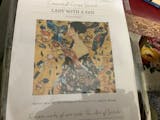Edvard Munch (5)
Edvard Munch (1863–1944) was the Norwegian artist who took one look at the human condition and said, "Yep, this is going to get intense." Best known for his iconic painting The Scream, Munch captured the raw, unfiltered chaos of emotions in a way that still resonates today. Whether it’s existential dread, loneliness, or a really bad Monday, his work makes you feel seen—but maybe in a slightly unnerving way.
Munch’s art is like a deep dive into the soul during its more dramatic moments. With swirling lines, exaggerated forms, and bold, moody colors, his paintings feel alive with tension. He was part of the Symbolist movement and a precursor to Expressionism, and his work often explored themes of love, death, anxiety, and despair. So, you know, light and breezy topics. But despite the heavy subject matter, there’s a raw beauty in the way Munch conveyed these emotions—it’s like he painted feelings, not just people or places.
The Scream, of course, is his magnum opus. That open-mouthed figure on a bridge, surrounded by a psychedelic sky, has become the universal symbol for existential angst. But Munch’s art isn’t all about screaming into the void. His series The Frieze of Life tackles everything from tender romance to gut-wrenching heartbreak, often showing the cyclical and bittersweet nature of human existence. If you’ve ever felt like your love life could double as a Greek tragedy, Munch would totally get it.
Munch lived through a lot—family tragedies, illness, and personal struggles—which gave his work a deeply autobiographical feel. He didn’t just observe life; he wrestled with it, and that raw honesty shines through in his art. It’s not always comfortable, but it’s undeniably compelling. So, if you’re in the mood for art that stares straight into the abyss (and maybe winks at you while doing it), Munch is your man.
















